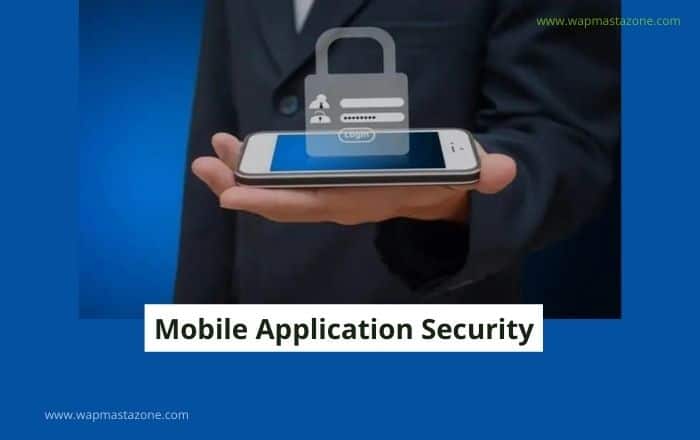
Mobile Application Security
Technology is frequently expanding and new applications are being developed and deployed throughout the year, layered with high-level security. However, Hackers are also constantly finding loopholes to break this mobile application security.
Below are the mobile application security tips you should consider so as to stay safe.
Suggested read: Social Engineering and Prevention Measures
Also read: Pegasus Spyware – The Most Intelligent Spyware Ever Built
1. Encrypt the Source Code
The smartphone malicious malware usually creates bugs and issues in the design and as well as the source code of the cell phone program. Over the last decades, Malicious codes have been reported to have damaged over 12 million smartphones within a short time. For this reason, is why you should encrypt the source code. On the other hand, you have to sure that no one else is dealing with the source code.
2. Use A Cell phone Protecting App
A user can use the cell phone surveillance app on a particular smartphone that has installed many apps and also has stored secret and private data in the memory. A cell phone data backup app protects the stored data on your device to the fullest.
If you have already installed the data backup app on the target cell phone, It will sync all the data into its online control panel. If someone has got access to any of the app on your phone remotely, a user can remotely delete the entire data within no time and get it back again.
3. You Should be Well Aware of the limitations
In a situation where you are managing a lot of cell phone operating systems, then mobile security should be one of your top priorities and you should be aware of security limitations.
Furthermore, you should also keep an eye on user case scenarios, encryption support, password support, and the geo-location data that supports the particular operating system that convincingly deals and distributes the particular software on your picked platforms.
Also read: 6 Ultimate Dangers of Using Free Public WiFi
Also read: 15 Best Free VPN for Android, iPhone and Computer Users
4. Create Stipulations for Data Security
Mobile phone spy software gets ingress into organizations or other secret or private data, and then disorganized data usually get stored in the system’s memory. Cell phone data encryption can convincingly be used to protect the data in a sandbox, and it is also possible with the SQLite Database Encryption Modules or on the other hand, offers level encryption around the number of operating systems.
5. Apply integration with MAM/MDM
It is basically cell phone device management and MAM stands for Mobile app management. MAM solutions are also supported by plenty of firms in order to mitigate apps and the threats that relate to the device. The MDM and MAM firms can create organizational app stores for distribution flow, and also cover the cell phone software with the help of several layers that remotely wipe the app and as well as the device data.
Through in-built support for plenty of the MDM/MAM brokers such as good technologies. You will be applying to provide the security of the cell phone apps to the fullest.
Also read: 6 Password Safety Tips you Should Never Ignore
6. Secure the Backend
Backend servers should have security measures in place to safeguard against malicious attacks. Therefore, ensure all APIs are verified based on the mobile platform you intend to code for since transport mechanisms and API authentication can differ from platform to platform.
Also read: How to Prevent Facebook Hack – Complete Guide
7. Prevent Unintended Data Leakage
When a user interacts with your app, they agree to certain permissions, which allow brands and businesses, and even you to glean crucial personal customer information. By ethically implementing advertising and using secure analytics providers, you can ensure that your user data never gets unintentionally leaked to hackers or malicious business vendors.
8. Use the Latest Cryptography Techniques
Most popular cryptography algorithms such as MD5 and SHA1 have proven to be insufficient for modern-day security requirements. Therefore, it is imperative that you always remain updated with the latest in security algorithm technology. Use modern encryption methods such as AES with 256-bit encryption and SHA-256 for hashing whenever it is possible. At the same time, you should also perform manual penetration testing and threat modeling on your app before it goes live.
Also Read: 9 Most Deadliest Computer Viruses that Stood the Test of Time
9. Minimize Storage of Sensitive Data
Minimize storage of sensitive data If possible, make sure confidential user data never gets stored within the device or in your servers. This is because unnecessarily storing user data adds to your risk level. If you have to store data and there is no way around it, use encrypted data containers or key chains, while using cookies for stored passwords.
You should also reduce your reliance on logs, and make sure they get automatically deleted after a set interval of time.
10. Perform a Thorough QA and Security Check
The last security tip for mobile apps is that you should never hesitate to test your application against randomly generated security scenarios before deployment.
If your budget allows, you can even hire hackers to help you identify security backdoors within an application. Many companies such as Google and Microsoft have held Hackathons where hundreds of hackers tried to find security issues within their apps.
Also read: 10 Signs of a Malware Infection on your Computer
Author Bio:
Angela is serving as senior editor and analyst at TheOneSpy Android monitoring app. She has tremendous expertise in kids monitoring, employee monitoring, business management, and business security. Follow her on twitter @LatestTechBlog



